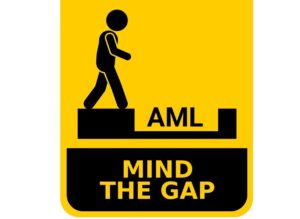In this fourth post of our digital property market series, we explore the process of identity verification. We examine the shortcomings and frustrations associated with proving identity today and how the continued use of scanned documents and PDFs to verify identity poses a blocker to progress towards a truly digital property market.
As a society we’re used to verifying our identity. Moving through significant life events; applying for a driving license, starting a new job, or even getting married, makes us accustomed to the requirement that some form of background check process will be completed that involves identity verification. Even something a bit more mundane, like opening a new bank account, calls for sharing identification documents and proving who you are, either in person or through facial recognition software.
All of these events are very separate in time and location, so it makes sense to perform a new ID check with a new entity. However, when it comes to buying or selling a home, you’re guaranteed to have to perform the same ID check in the same timeframe with every party you engage with; the estate agent, the conveyancer, the broker, etc. Multiple, identical checks during a single transaction does not constitute progress. It’s cumbersome and outdated, and the ones who suffer the most are the buyers and sellers.
The main reason behind this is that despite many valiant efforts, the property market is still not fully digital. Even with the introduction of digital identification providers the process is still fragmented, and without a digital infrastructure there is no meaningful connectivity between parties.
Caught somewhere between the physical and the digital
If we think about a property transaction in the physical world, when we were using cash and paper deeds, you can imagine the ease by which a transaction could be completed. The buyer and seller could meet in the same physical location, they could bring the physical money and paper deeds to that location, they could bring their physical proof of identity, their physical solicitors, the physical paper contract and a physical pen. In this one space all these things could interact, be verified, signed and exchanged.
We then started the transition to the digital world almost all of the constituent parts of the transaction moved to digital states. New digital identification technologies entered the process, along with an ambition to foster rapid efficiency gains. Instead, we ended up with a highly siloed and repetitive process where different digital identification providers work with different professionals, and consumers are forced to perform the same checks again and again, often on different platforms.
The lack of a digital identity sharing mechanism for the market means that despite the hopeful attempt to digitise the process we’ve entrenched the very silos we were trying to bridge.
The path to the seamless sharing of truly digital identity
The processes for identity verification today are simply not fit for purpose if we want to move to a truly digital property market. For things to change for the better, three things need to happen, all of which are possible today.
First of all, veritable digital identification needs to become universally used. We have to consign the days of manually identifying customers with physical, scanned or printed documents to the past, and adopt the more secure and more digital methods readily available today.
Secondly, as digital identification becomes the norm it must be standardised, with a choice of digital identification providers anyone can use with confidence and consistency. There has been startlingly promising progress in this space with the Department of Culture, Media and Sport setting out a trust framework to develop principles to frame digital identity policy in the UK, with the view of passing it into law in 2024.
And finally, we need to enable the seamless sharing of identity, not the patchwork processes of emailing or uploading PDFs and scanned documents. Veritable sharing of digital identity whilst maintaining the integrity and veracity of the original digital identification. This part needs orchestration, something we’ve spoken about before.
Establishing trust in the digital age
Orchestration is the key to establishing trust, not just for the digital identification process but for the digital property market as a whole. Orchestration would provide a much-needed part of UK digital infrastructure that many other developed and emerging economies have already filled.
In an orchestration system, data can be securely and seamlessly shared between participants in the trust framework. So once digital identification is stored as fluid data and not static documents, buyers and sellers will no longer need to prove who they are multiple times as the system will know it’s the same person. Identity data is never duplicated or inconsistent as the orchestration system ensures everyone is looking at the same common view of the truth. And finally, orchestration provides data provenance, so there is always a documented trail that accounts for the original piece of digital identity.
Orchestration, such as the Coadjute Network, would innovatively allow an estate agent to commence a digital identification check on a buyer or seller, which could then be shared (with consent) amongst the other participants in the transaction, streamlining the process for professionals and consumers.
A property market with shareable digital identity at its core
In a fully digital property market, everyone, including buyers, sellers, estate agents, conveyancers, and brokers, would be able to create, own, and share secure, trusted digital identities. The possibilities and efficiencies this would open-up for everyone in the market are incredible.
To get to this place we need to move away from the repetition, the accepted position of buyers and sellers performing the same process multiple times, and away from the use of scanned documents and PDFs to verify identity. Let’s embrace the technological solutions we have at our disposal today.
With these efforts, a trust framework, and the foundational digital infrastructure to bring it all together, we could make the customer journey a seamlessly digital one. One that’s fit for the digital age we live in. One that beats within the heart of a truly digital property market.


